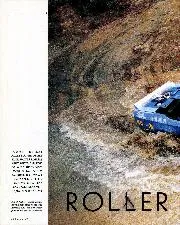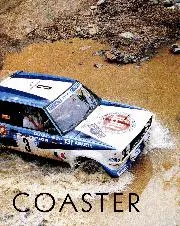Between takes, I met both Thomas and Scamarcio on set. “I love making films and I love cars,” said Thomas of his motivation to get involved. “They are my two passions. When I heard about this incredible story and the subterfuge within it the stars aligned. The more you dig into it as someone with an understanding about cars — the two-wheel-drive Lancias versus the four-wheel-drive Audis — it was a miracle that Lancia won this championship. Then all these wonderful people came to this film, the director Stefano and Riccardo who turned me on to the project. ‘OK, let’s do it.’”
“It’s a wonderful story,” said Scamarcio. “A very small team with less power beats a big company with a lot of money and technological supremacy. They lose because the most important power is friendship, humanity, sensitivity. This is our subject.”
The most familiar face in the movie is Niki Lauda, who plays Audi team chief Roland Gumpert. I jest, of course… it’s Daniel Brühl, the well-established Hollywood star who was by far the best thing about the James Hunt/Lauda movie Rush. In his second racing turn, the only challenge we might face as an audience is forgetting Brühl isn’t playing the great Austrian this time, such is his physical resemblance.

Volker Bruch plays Rohrl, seen here enacting a press conference alongside Riccardo Scamarcio (Fiorio)
In terms of drivers, the main focus here is the legendary Walter Röhrl, played by Volker Bruch who at least carries a passing resemblance, even if he inevitably lacks the beanpole imposing physical presence. The story revolves around Fiorio convincing Röhrl to join Lancia and rally its outdated 037 following the reigning champion’s fall-out with Opel. From the trailer, it appears the screenplay taps into Röhrl’s glorious eccentricity, given the scene between the pair while the two-time WRC king is tending to his bees. Röhrl of course takes the bait and inspires the title charge, even if he (somewhat maddeningly) chooses not to chase a third drivers’ crown for himself. Much like Sébastien Ogier and now Kalle Rovanperä in the modern world. As I witnessed, the movie ends with Markku Alen’s victory in Sanremo to secure the constructors’ title, with Röhrl having played his part. Presumably it will also acknowledge Hannu Mikkola’s drivers’ title for the Audi camp – but the point here is the 037 defeating the Quattro in the manufacturers’ standings after a David and Goliath-style duel.
So is it true to history? There are bound to be points of dramatic licence, because there always are with racing movies. Thomas made it clear to me he had no interest in re-telling history via a docu-drama. But both producers emphasised how important authenticity was to them. “Before we wrote the script we had a long discussion over many days with Cesare Fiorio, who is our mentor,” said Scamarcio. “He told us all the secrets about what happened in that 1983 championship. From his real voice we built the script. Of course, it’s cinema and we know how to put the pieces together. But the script in the movie tells exactly what happened. We are very respectful of that. We didn’t invent things that didn’t happen – apart from small adaptations for a cinematic story. But the real story was already so cinematic.”





